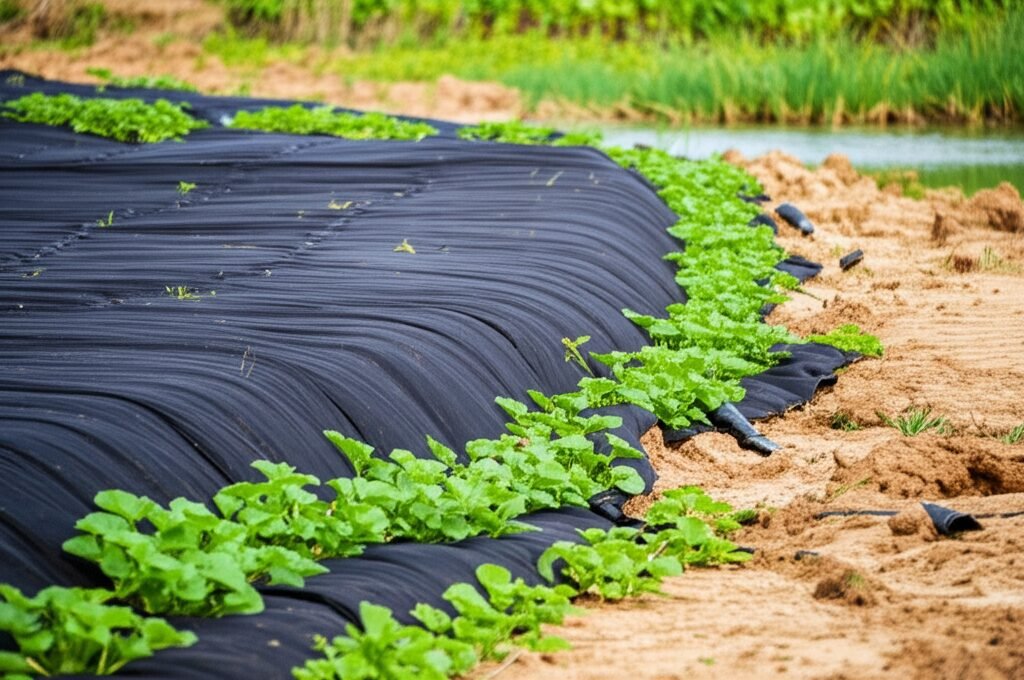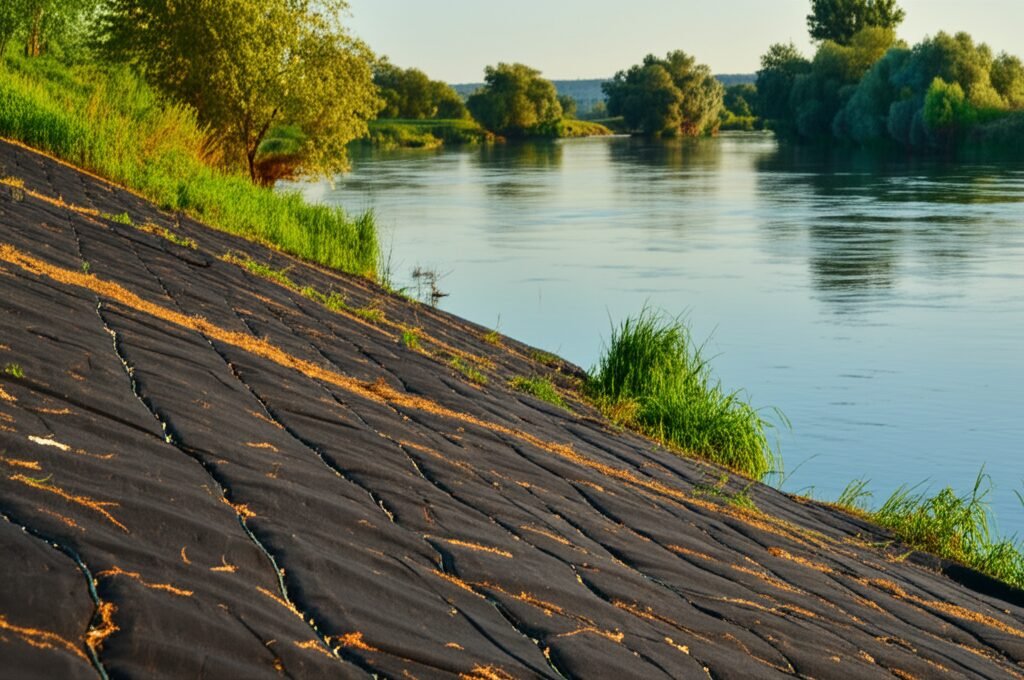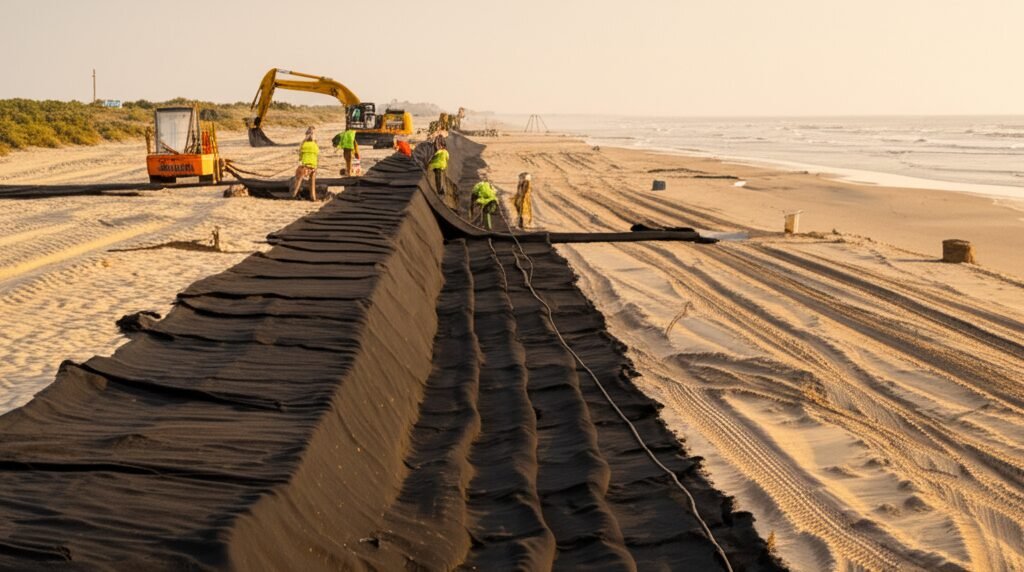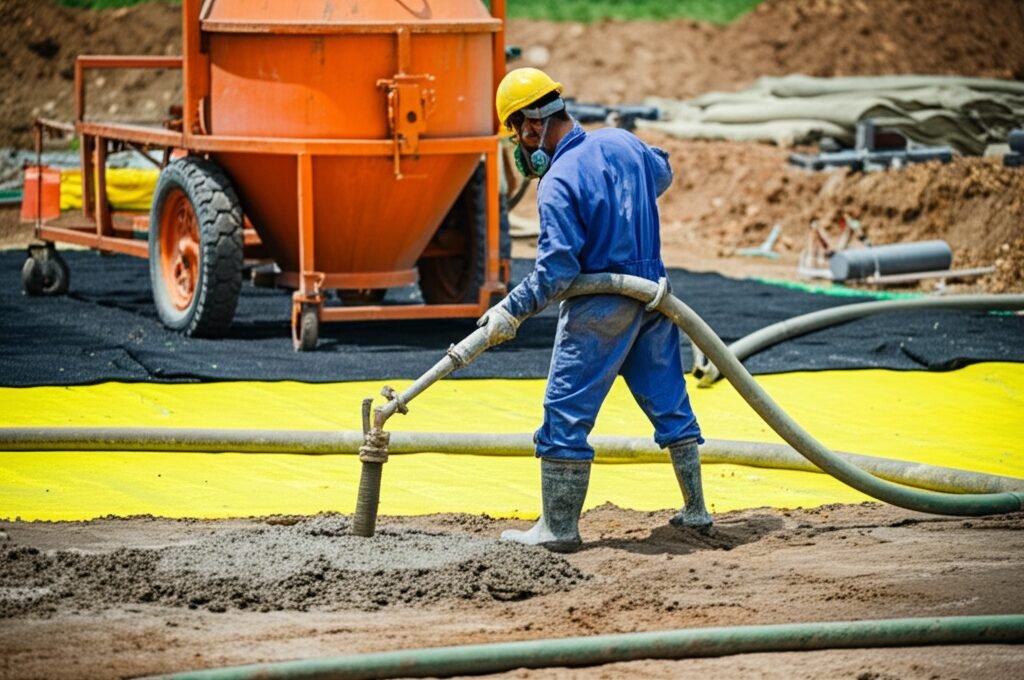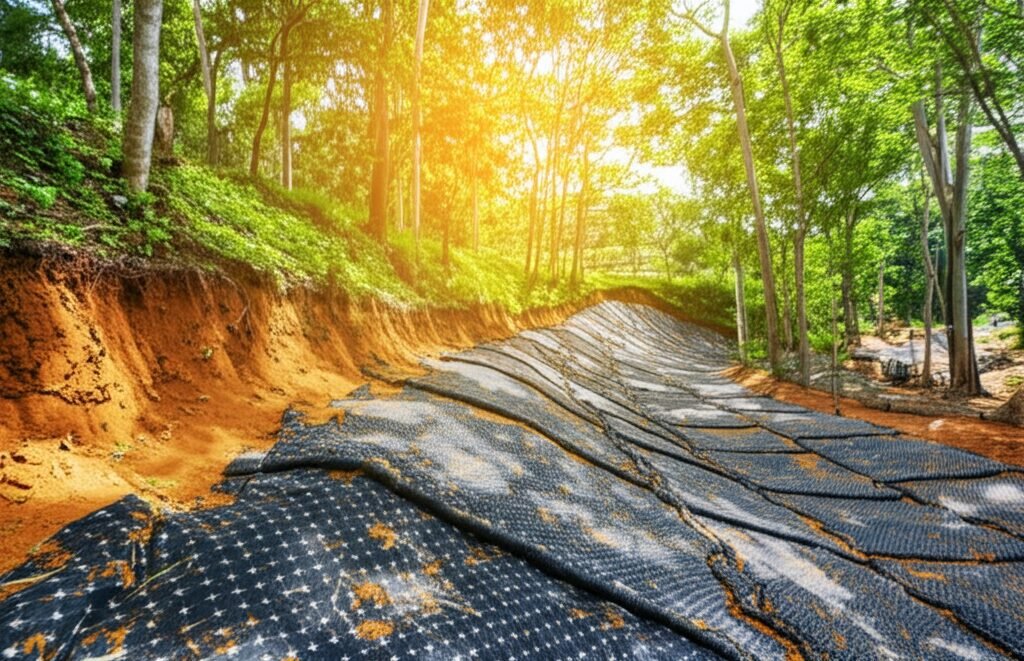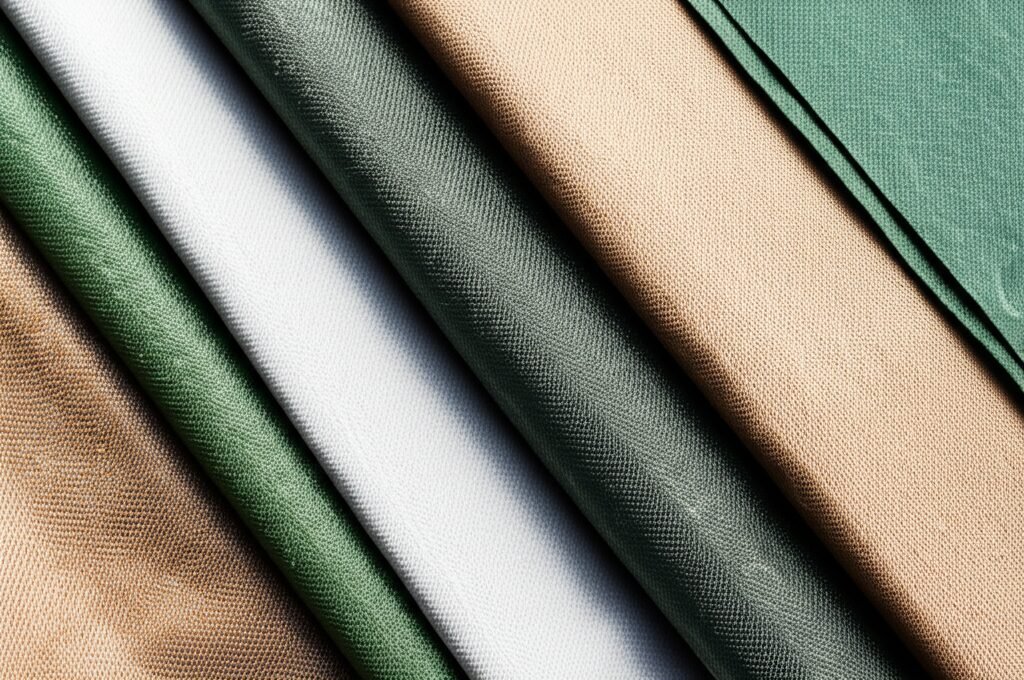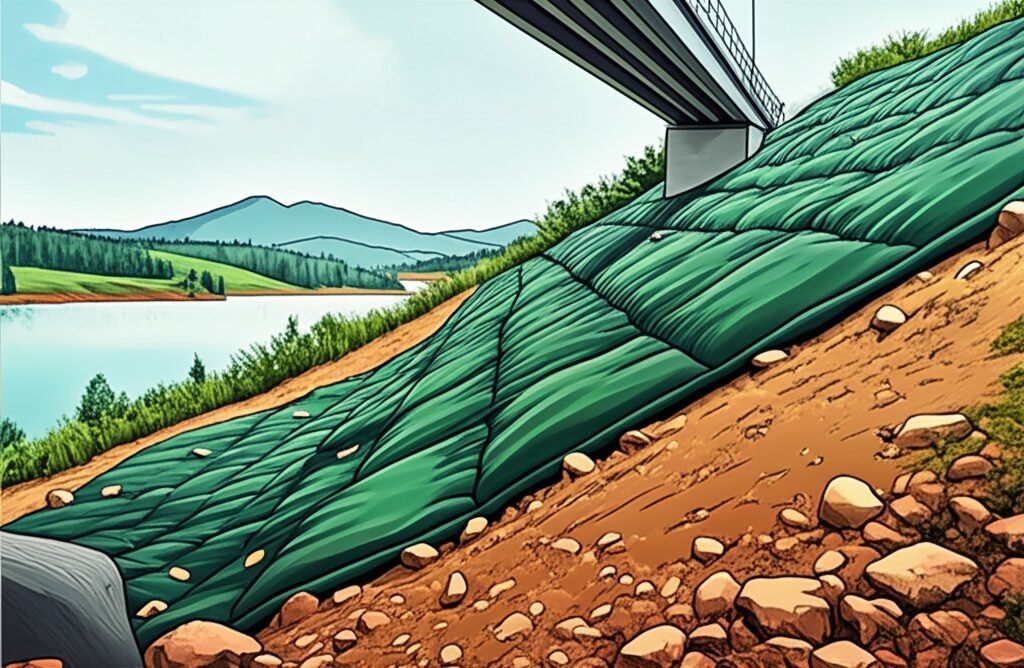Geotextile Erosion Control: Mattress Installation & Riverbank Protection
Key Takeaways
- Physical Barrier: Geotextile mattresses physically block soil from being washed or blown away by water or wind. Simple, right?
- Filtration: They let water pass through slowly, preventing pressure buildup, but keep soil particles behind. It’s clever stuff.
- Structural Stability: Many mattresses are filled with grout (a type of concrete) to give them weight and form a permanent, solid protective layer.
- Vegetation Support: Some types are designed to let plants grow through them, adding natural root reinforcement for long-term stability.
- Adaptability: Different fabric types (woven, non-woven) and designs (flat, raised pattern) suit different situations like shorelines, riverbanks, and slopes.
- Proven Success: These systems are used globally in many Proven Geotextile Mattress Projects for Water Infrastructure to protect land and structures.
What are Geotextile Mattresses and How Do They Stop Erosion?
So, you’ve heard about geotextile mattresses, maybe seen ’em on a construction site near water or on a steep hill. What actually are they, though? Think of ’em like big, tough fabric envelopes, often made from synthetic materials like polypropylene or polyester. They’re designed specifically to tackle erosion – that annoying process where soil gets moved around by water or wind, causing all sorts of problems. Sometimes they look like giant flat quilts laid over the ground; other times they have patterns or pockets. The whole point is to keep the ground where it’s supposed to be. You can Transform Terrains with Durable Geotextile Mattresses using these things, its quite impressive what they can do when used right.
But how does a piece of fabric, even a big strong one, stop tonnes of soil shifting? It’s down to a few core ideas. First off, the mattress acts as a physical shield. Raindrops hitting bare soil? They splash soil particles everywhere. Water flowing fast over it? It picks up soil and carrys it off. Wind? Same story on dry ground. The mattress cover simply stops that direct impact. It shields the soil surface. The energy from the rain or the flowing water hits the fabric first, not the vulnerable soil underneath. I remember one project years back, a small channel realignment, where they skipped proper bank protection initially. After one heavy rain, the mess was unbelievable – banks collapsing, sediment everywhere. A quick install of some basic geotextile mattress sections sorted it right out, was quite the lesson in doing it right first time.
Then there’s the slowing down effect. When water flows over the textured surface of a geotextile mattress, it creates friction. It’s not a smooth ride for the water anymore. This friction slows the water’s speed, especially right near the surface. Slower water has way less power to pick up and move soil particles. So, even if water gets under the mattress somehow, or flows over the edges, its erosive power is much reduced just by the presence of the mattress nearby. It’s not just about blocking; it’s about changing the water’s behaviour. The Advantages and Applications of Geotextile Mattresses in Erosion Control often mention this slowing effect, its a key part of how they work. You see it clearly when watching water flow over a protected area versus an unprotected one – the difference in speed and turbidity (how cloudy the water is with soil) is stark. It’s a basic principle, but really effective in practice, stops things getting washed away downstream.
Letting Water Pass: The Crucial Role of Filtration and Drainage
Okay, so blocking the soil is one thing. But what about the water itself? If you just put a solid waterproof sheet on a slope, water would build up behind it or underneath it. This trapped water creates hydrostatic pressure – basically, water pushing outwards – and that pressure can actually cause more instability, like making a whole slope slide. Not good, eh? So, how do geotextile mattresses deal with this? They filter and drain. This is where the ‘geotextile’ part really earns its keep. The fabrics used are permeable, meaning water can pass through them. But – and here’s the clever bit – the holes, or pores, in the fabric are designed to be small enough to stop most soil particles from getting washed through along with the water.
Think of it like a coffee filter. The water goes through, but the coffee grounds stay behind. Same idea here. Rainwater or groundwater seeping out of a slope can pass through the mattress fabric, relieving that dangerous pressure. But the soil particles? They’re held back, kept safely in place behind the fabric layer. This filtration function is absolutely critical. Without it, the mattress might hold the surface soil for a bit, but pressure from behind could cause a bigger failure later, or water flowing underneath could wash out fine particles around the mattress anchor points. Selecting the right fabric with the correct opening size for the soil type you’re dealing with is massively important. Get it wrong, and either it clogs up (too fine) or lets soil through (too coarse). It’s a balance act. Seen it happen – specify the wrong pore size and you either get a blocked, bulging mattress or one that just lets all the fines escape underneath. Advanced Filtration Geotextile Mattress Systems are designed specifically with this balance in mind.
This drainage capability also helps in situations like riverbanks or shorelines. Water levels go up and down, right? As the water level drops, water stored in the bank soil wants to flow back out towards the river or sea. If the bank face is blocked by something impermeable, that outflowing water gets trapped, softening the bank and making it prone to collapse. A permeable geotextile mattress allows this drawdown drainage to happen gradually and without building up pressure. The water escapes, the soil stays put. This prevents a common type of bank failure called ‘slumping’ which you often see after floods recede. It’s all about managing the water as much as stabilising the soil. These systems often work better than traditional ‘hard’ defenses like concrete walls in these situations precisely because they let the water through in a controlled way. They work with the water dynamics, not just try to fight them. You can learn more about specific examples in this Geotextile Mattress Demonstration.
Building Structure: Fabric Types, Grout Filling, and Stability
Not all geotextile mattresses are just fabric laid on the ground. Many, especially for heavy-duty jobs like river training or coastal defence, are designed to be filled with grout – a fluid concrete mix. How does this work? Well, the mattress usually consists of two layers of strong geotextile fabric stitched together in a specific pattern. This creates pockets or compartments inside the mattress ‘envelope’. When it’s laid out on the site, this empty mattress sort of drapes over the ground contours. Then, grout is pumped into inlet ports on the mattress. It flows through filling up all those pockets. You can see guides on this process, like the Geotextile Mattresses Grout Injection and Construction Guide.
Why do this? What’s the point of the grout? Weight and rigidity, mostly. The grout sets hard, turning the flexible fabric mattress into a solid, heavy slab that’s interlocked with the soil surface beneath. This extra weight provides immense stability against strong water currents or wave action. A simple fabric layer might get lifted or shifted by really powerful flows, but a grout-filled mattress several inches thick? That’s goin nowhere fast. It essentially armors the surface. The fabric acts as the ‘formwork’ for the concrete, ensuring it takes the shape needed and stays put while it cures. It also provides that crucial filtration layer against the soil before the grout is pumped in. The Function and Benefits of Grout in Geotextile Mattress Construction are significant for these tougher applications. I remember seeing a coastal defence scheme where they used huge grout-filled mattresses – the sheer scale and the way they locked together to form a continuous barrier against the waves was seriously impressive. Definitely needed that mass.
The type of fabric used matters a lot too, especially when grout’s involved. You need fabrics with high tensile strength to contain the pressure of the liquid grout during filling. You also need good abrasion resistance, ’cause these things often get installed in rough environments. Woven fabrics, made like cloth with threads going over and under, are often used for their strength and stability. Non-woven fabrics, which are more like felt made from tangled fibres, are sometimes used for their excellent filtration properties or flexibility. Some advanced mattresses might even use composite fabrics, combining layers for specific benefits. The pattern the fabric layers are stitched together in also influences the final shape – some create a flatter finish, others create raised ‘pillows’ or ridges. These patterns, like in Raised-Pattern Geotextile Mattress Systems Cut Costs 40%, aren’t just for looks; they can affect the hydraulic performance (how water flows over it) and how well the mattress keys into the ground. Understanding the different Types of Geotextile Fabrics and Properties for Grout-Filled Mattresses is key to choosing the right system for the job. It’s not just about finding any geotextile mattress; it’s about the right one.
Working with Nature: Vegetation and Geotextile Synergy
So, we’ve talked about fabric stopping soil movement, letting water through, and using grout for weight. But there’s another really neat trick some geotextile mattresses have up their sleeve: they can help plants grow. Eh? How does that work? Well, some systems are designed with open pockets or are made from materials that allow plant roots to penetrate right through them. Instead of just being a hard armour layer, these mattresses become a stable base for vegetation. This is a huge plus, especially for long-term stabilisation and making the site look a bit nicer, more natural. Advanced Vegetation Geotextile Mattress Systems for Slope Stability are specifically designed for this purpose.
Why bother with plants? Because established vegetation is brilliant at erosion control itself.
- Roots: Plant roots create a network within the soil, binding particles together. Think of it like natural rebar. This root matrix significantly increases the soil’s shear strength, making it much more resistant to being washed away.
- Canopy Cover: Leaves and stems intercept raindrops before they hit the soil, reducing splash erosion (remember that?). They also slow down surface water flow.
- Water Use: Plants absorb water from the soil (transpiration), which helps to keep the ground drier and less prone to saturation and slipping.
By combining the immediate protection of the geotextile mattress with the long-term reinforcement of vegetation, you get the best of both worlds. The mattress provides stability from day one, protecting the slope or bank while the seeds germinate and the plants get established. Once the plants are mature, their roots intertwine with the mattress and the soil beneath, creating a really robust, integrated system. Sometimes, topsoil is spread over the mattress or placed in specific pockets to give the seeds a good start.
This approach is particularly great for environmentally sensitive areas where a ‘green’ solution is preferred over hard engineering like concrete. It helps blend the erosion control structure back into the surrounding landscape. I’ve seen slopes stabilized this way that, after a few years, you’d hardly know there was a geotextile mattress underneath – it just looks like a healthy, stable vegetated slope. Products like ACEFormer™ are examples of systems designed to promote this kind of vegetation growth alongside providing erosion control. It’s a smarter way to work, using the engineering of the mattress to give nature a helping hand, leading to a more sustainable and often more resilient long-term solution. Getting good vegetation cover is key for the Effective Slope Stabilization & Riverbank Erosion Control Guide in many situations.
Shorelines, Slopes, and Channels: Key Applications for Geotextile Mattresses
Right, we know how they work in theory – shielding, filtering, adding weight, helping plants. But where do you actually use these geotextile mattresses? Turns out, they’re pretty versatile. One of the biggest areas is protecting edges next to water. Think Geotextile Mattresses for Shoreline Protection and Erosion Prevention. Coastlines get battered by waves, and riverbanks get scoured by currents, especially during floods. A grout-filled mattress laid on the slope of a riverbank or just below the low-water mark on a coast can absorb that wave energy and resist the scouring force of the water. It prevents the bank from being undercut and collapsing. Because they can be flexible when installed (before grouting), they can conform well to uneven beds, which is a big advantage over rigid structures.
Steep slopes are another classic use case. Road cuttings, embankments, reservoir edges – any man-made or natural slope can be prone to surface erosion from rain or instability if the soil is weak. Laying a geotextile mattress, particularly one designed for vegetation growth, can stabilize that slope face quickly. It prevents those surface rills and gullies from forming and gives vegetation a chance to establish deep roots, locking everything together long-term. It’s often way cheaper and faster than rebuilding a slope at a shallower angle or putting in massive retaining walls. Proper slope protection is a big part of infrastructure safety. Ensuring Effective Slope Stabilization & Riverbank Erosion Control Guide measures are in place is crucial for roads, railways, and buildings near slopes.
Then there’s channel lining. Drainage ditches, canals, spillways – anywhere water is meant to flow in a controlled way. If these channels are just bare earth, the flowing water will likely erode the bed and banks over time, making the channel wider, shallower, and less efficient. Lining the channel with a geotextile mattress (often grout-filled for durability and hydraulic efficiency) provides a stable, erosion-resistant surface. It maintains the channel shape and capacity and prevents sediment from being washed downstream where it could cause blockages or pollution. You can find various types suitable for these jobs, like those shown on sites like Alibaba’s geotextile mattress section. They are also used for protecting bridge foundations (abutments and piers) from scour caused by river currents, and protecting underwater pipelines. Any place soil or sediment meeting moving water needs managing, basically. These systems offer Specialized Geotextile Protection for Critical Infrastructure in many ways.
Getting it Right: Installation Essentials for Effective Erosion Control
Look, these geotextile mattresses are clever bits of kit, but they only work properly if they’re installed correctly. You can have the best mattress design in the world, but a shoddy installation job? It just won’t deliver. So, what are the key things to get right? First up is ground preparation. You can’t just chuck the mattress down on lumpy ground full of rocks and tree roots. The surface needs to be graded reasonably smooth. Why? Because you want the mattress to lie in close contact with the soil underneath. Big gaps mean water can get under there and cause mischief, eroding stuff from below. Any soft spots or holes should be filled and compacted too. A good base is, well, basic.
Anchoring is another big one. Especially on slopes or in areas with strong currents, the mattress needs to be firmly secured, particularly at the top edge. Usually, this involves digging an anchor trench along the crest of the slope or bank, laying the end of the mattress into the trench, and then backfilling it tightly. This stops the mattress from just sliding down the hill or getting peeled back by water flow. Sometimes additional anchors or pins might be needed across the face of the mattress too, depending on the site conditions and the mattress type. You have to stop that leading edge from lifting, its critical. I saw an installation once where they skimped on the anchor trench depth. First decent rain, water got behind it, and the whole top section started to peel away. Had to be redone, cost ’em time and money. Lesson learned: follow the specs! There’s a useful Geotextile Mattress Uses, Construction, Benefits & Installation Guide that covers some of these points.
Overlapping adjacent panels correctly is also important if you’re covering a large area. You need to ensure a good join to prevent water finding a weak spot between panels. The manufacturer’s instructions usually specify the required overlap distance and how the panels should be joined (sometimes stitched, sometimes stapled, sometimes just overlapped). And if it’s a grout-filled mattress? The grouting process itself needs careful control. You need the right mix consistency, pump pressure, and a methodical filling sequence to make sure all the pockets fill completely without bursting the fabric. You can see how it’s done in resources like the Geotextile Mattresses Grout Injection and Construction Guide. Proper installation ensures the mattress functions as designed – filtering, draining, protecting, and staying put for years to come. Getting Expert Geotextile Mattress Solutions for Erosion Control involved often makes sense for complex projects. And look for manufacturers with proven experience, like checking out the background of people like Li Gang: Expert Geotextile Mattress Manufacturing Leader.
Real-World Success: Proven Geotextile Mattress Projects in Action
Theory is one thing, yeah? Seeing how these things perform out in the real world is what really counts. Luckily, there’s loads of examples showing just how effective geotextile mattresses can be. Many companies and authorities document their Proven Geotextile Mattress Projects for Water Infrastructure, giving us solid evidence. Take riverbank protection schemes. All over the world, engineers have used grout-filled mattresses to stop rivers eating away at valuable farmland or threatening houses built near the bank. Instead of trucking in tonnes of rock riprap (which can be expensive and hard to source), they lay down these mattresses, pump ’em full of grout, and create a durable, often cheaper, lining that follows the river’s curves nicely. Sometimes they’re combined with vegetated upper banks for a softer look.
Coastal defences are another big area. Protecting harbours, sea walls, and shorelines from wave attack is a constant battle. Large-scale, heavyweight grout mattresses have been used successfully as revetments (sloping structures on the shore) or as aprons at the toe of sea walls to prevent undermining. Their flexibility during installation means they can handle slightly uneven seabeds, and once filled, they form massive, interconnected barriers. I worked adjacent to a project reinforcing an old Victorian seawall; they laid these huge mattress sections underwater using divers and specialised pumping gear. It was complex, but it saved the historical wall from failing. The Geotextile Mattress Technology: History, Evolution & Benefits shows how far these systems have come.
On land, stabilizing steep highway cuttings is a common success story. Instead of just leaving bare soil exposed after excavation, which would erode really fast and potentially block the road below, engineers install vegetated geotextile mattresses. They spray seed mix on, maybe add some topsoil, and within a season or two, you have a green, stable slope that blends into the landscape. It’s safer, looks better, and prevents ongoing maintenance headaches from erosion problems. Similar applications work well for reservoir embankments or landfill caps, providing long-term stability and controlled drainage. Watching a demonstration, like the Geotextile Mattress Demonstration offered by some companies, can really show the practicalities and effectiveness for different scenarios. These aren’t just theoretical ideas; they are workhorse solutions used every day on important civil engineering projects worldwide.
Beyond the Basics: Advanced Considerations and Material Properties
Okay, we’ve covered the main ways these mattresses work. But for the engineers and designers out there, or just the really curious folks, there’s more to it, yeah? Choosing the exact right mattress involves looking closely at the specific properties of the geotextile fabric itself and sometimes the grout mix too. It’s not just about ‘strong fabric’; it’s about matching quantified properties to the demands of the site. For instance, the tensile strength (how much pulling force it can take before breaking) is crucial, especially for the grout-filled types or on very steep slopes. You measure this in kilonewtons per meter (kN/m). Then there’s puncture resistance – important if you’re placing rock armour on top of the mattress, or if there’s likely to be debris washing down a channel.
The filtration properties we talked about? They get technical too. Engineers look at:
- Permittivity: How quickly water can flow through the fabric under pressure (measured per second).
- Apparent Opening Size (AOS): This relates to the size of the pores in the fabric, indicating the largest soil particle size that can effectively be retained (often given as an equivalent sieve number). You need an AOS small enough to hold back your site soil, but large enough to avoid clogging. Getting this right is vital for long-term performance of Advanced Filtration Geotextile Mattress Systems.
- UV Resistance: If the mattress is going to be exposed to sunlight for a long time before vegetation covers it or gets buried, it needs to be resistant to degradation from ultraviolet light. Most synthetic fabrics have UV inhibitors added, but the level matters for exposed applications.
And for grout-filled mattresses, the grout design matters too. You need a mix that flows well enough to fill all the voids, doesn’t segregate (heavy bits settling out), and gains strength reasonably quickly. Sometimes additives are used to improve pumpability or reduce shrinkage. The thickness of the filled mattress is also a key design parameter, calculated based on the expected hydraulic forces or stability requirements. Specialist products like ACEFormer™ often come with detailed technical specifications covering all these properties, allowing engineers to make informed choices. Digging into the specifics of Types of Geotextile Fabrics and Properties for Grout-Filled Mattresses helps match the product precisely to the challenge. Understanding a bit about current Market Trends can also indicate where innovation in materials and designs might be heading.
Frequently Asked Questions (FAQs)
Q1: How long do geotextile mattresses last?
A: Durability really depends on the type of mattress, the materials used (especially UV resistance if exposed), the site conditions (like water flow speed, wave energy), and whether its filled with grout or supports vegetation. Properly designed and installed systems, especially grout-filled ones in less harsh environments, can last for many decades – 50 years or more isn’t unusual for some applications. Vegetated ones rely on the plants establishing long-term.
Q2: Are geotextile mattresses expensive?
A: Compared to what? They are often more cost-effective than traditional methods like placing large amounts of rock riprap (especially if rock has to be transported far) or building concrete structures. Raised-Pattern Geotextile Mattress Systems Cut Costs 40% even claim specific savings. You need to consider the full project cost: materials, transport, installation time, and long-term performance. Often, mattresses win out on overall value, particularly when you factor in faster installation.
Q3: Can they be installed underwater?
A: Yes, absolutely. Grout-filled mattresses are frequently installed underwater for things like bridge scour protection, pipeline ballast, and lining channels or harbour beds. It requires specialised equipment and techniques (often involving divers or remotely operated vehicles for placement and grout injection), but it’s a standard application for experienced contractors.
Q4: Are they environmentally friendly?
A: They can be, especially the types designed to integrate vegetation. These blend into the landscape and create habitat. Compared to large concrete structures or quarrying lots of rock, the footprint can be lower. The synthetic materials themselves aren’t biodegradable (which is good for longevity), but they are generally inert and don’t leach harmful chemicals. Using mattresses can prevent soil erosion, which stops sediment pollution downstream – a definite environmental benefit.
Q5: Can I install one myself for a small garden project?
A: For very small-scale things, maybe a simple, unfilled fabric erosion control blanket might be manageable. But the larger geotextile mattresses, especially the grout-filled types, require specialised knowledge and equipment for correct ground prep, anchoring, overlapping, and particularly grout mixing and pumping. For anything beyond minor landscaping, it’s nearly always best to use experienced installers and get proper design advice. Check out guides like the Geotextile Mattress Uses, Construction, Benefits & Installation Guide to see the scope of work involved.



